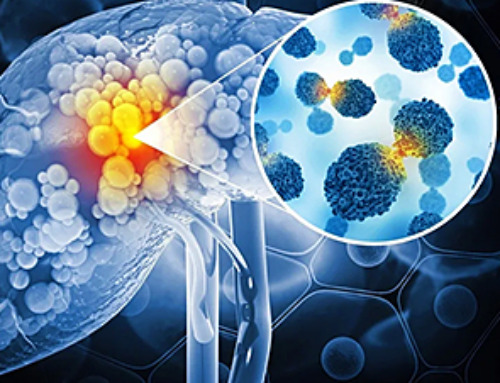CREME, an AI-powered virtual lab, developed at Cold Spring Harbor Laboratory, offers a revolutionary approach to genetic research by simulating CRISPR interference (CRISPRi).
This tool enables scientists to perform virtual genetic experiments and predict their effects on gene activity, which significantly reduces the time and resources required for lab work. CREME's insights into gene regulation could greatly enhance drug discovery and provide access to researchers without physical labs.
Revolutionizing Genetics With AI: Introducing CREME
Imagine you're looking at millions upon millions of mysterious genetic mutations. With CRISPR gene-editing technology, a select few of these mutations might have therapeutic potential. However, proving it would mean many thousands of hours of lab work. Just figuring out which ones are worth exploring further would take a lot of time and money. But what if you could do it in the virtual realm with artificial intelligence?
CREME is a new AI-powered virtual laboratory invented by Cold Spring Harbor Laboratory (CSHL) Assistant Professor Peter Koo and his team. It allows geneticists to run thousands of virtual experiments with the click of a button. Now, scientists can use it to begin identifying and understanding key regions of the genome.
CRISPRi and CREME: Simulating Genetic Changes
The program is modeled after CRISPR interference (CRISPRi), a genetic perturbation technique based on CRISPR. CRISPRi allows biologists to turn down the activity of specific genes in a cell. CREME lets scientists make similar changes in the virtual genome and predicts their effects on gene activity. In other words, it's almost like an AI version of CRISPRi.
"In reality, CRISPRi is incredibly challenging to perform in the laboratory. And you're limited by the number of perturbations and the scale. But since we're doing all our perturbations [virtually], we can push the boundaries. And the scale of experiments that we performed is unprecedented—hundreds of thousands of perturbation experiments," explains Koo.
Delving Into Genome Analysis With AI
Koo and his team tested CREME on another AI-powered genome analysis tool called Enformer. They wanted to know how Enformer's algorithm makes predictions about the genome. Questions like that are central to Koo's work, he says.
"We have these big, powerful models. They're quite compelling at taking DNA sequences and predicting gene expression. But we don't really have any good ways of trying to understand what these models are learning. Presumably, they're making accurate predictions because they've learned a lot of the rules about gene regulation, but we don't actually know what their predictions are based off of."
Implications for Drug Discovery and Accessibility
With CREME, Koo's team uncovered a series of genetic rules that Enformer learned while analyzing the genome. That insight may one day prove invaluable for drug discovery. "Understanding the rules of gene regulation gives you more options for tuning gene expression levels in precise and predictable ways," says Koo.
With further fine-tuning, CREME may soon set geneticists on the path to discovering new therapeutic targets. Perhaps most impactfully, it may even give scientists who do not have access to a real laboratory the power to make these breakthroughs.
Reference: 16 September 2024, Nature Genetics.
DOI: 10.1038/s41588-024-01923-3
News
Nanoflowers rejuvenate old and damaged human cells by replacing their mitochondria
Biomedical researchers at Texas A&M University may have discovered a way to stop or even reverse the decline of cellular energy production—a finding that could have revolutionary effects across medicine. Dr. Akhilesh K. Gaharwar [...]
The Stunning New Push to Protect the Invisible 99% of Life
Scientists worldwide have joined forces to build the first-ever roadmap for conserving Earth’s vast invisible majority—microbes. Their new IUCN Specialist Group reframes conservation by elevating microbial life to the same urgency as plants and [...]
Scientists Find a Way to Help the Brain Clear Alzheimer’s Plaques Naturally
Scientists have discovered that the brain may have a built-in way to fight Alzheimer’s. By activating a protein called Sox9, researchers were able to switch on star-shaped brain cells known as astrocytes and turn them into [...]
Vision can be rebooted in adults with amblyopia, study suggests
Temporarily anesthetizing the retina briefly reverts the activity of the visual system to that observed in early development and enables growth of responses to the amblyopic eye, new research shows. In the common vision [...]
Ultrasound-activated Nanoparticles Kill Liver Cancer and Activate Immune System
A new ultrasound-guided nanotherapy wipes out liver tumors while training the immune system to keep them from coming back. The study, published in Nano Today, introduces a biodegradable nanoparticle system that combines sonodynamic therapy and cell [...]
Magnetic nanoparticles that successfully navigate complex blood vessels may be ready for clinical trials
Every year, 12 million people worldwide suffer a stroke; many die or are permanently impaired. Currently, drugs are administered to dissolve the thrombus that blocks the blood vessel. These drugs spread throughout the entire [...]
Reviving Exhausted T Cells Sparks Powerful Cancer Tumor Elimination
Scientists have discovered how tumors secretly drain the energy from T cells—the immune system’s main cancer fighters—and how blocking that process can bring them back to life. The team found that cancer cells use [...]
Very low LDL-cholesterol correlates to fewer heart problems after stroke
Brigham and Women's Hospital's TIMI Study Group reports that in patients with prior ischemic stroke, very low achieved LDL-cholesterol correlated with fewer major adverse cardiovascular events and fewer recurrent strokes, without an apparent increase [...]
“Great Unified Microscope” Reveals Hidden Micro and Nano Worlds Inside Living Cells
University of Tokyo researchers have created a powerful new microscope that captures both forward- and back-scattered light at once, letting scientists see everything from large cell structures to tiny nanoscale particles in a single shot. Researchers [...]
Breakthrough Alzheimer’s Drug Has a Hidden Problem
Researchers in Japan found that although the Alzheimer’s drug lecanemab successfully removes amyloid plaques from the brain, it does not restore the brain’s waste-clearing system within the first few months of treatment. The study suggests that [...]
Concerning New Research Reveals Colon Cancer Is Skyrocketing in Adults Under 50
Colorectal cancer is striking younger adults at alarming rates, driven by lifestyle and genetic factors. Colorectal cancer (CRC) develops when abnormal cells grow uncontrollably in the colon or rectum, forming tumors that can eventually [...]
Scientists Discover a Natural, Non-Addictive Way To Block Pain That Could Replace Opioids
Scientists have discovered that the body can naturally dull pain through its own localized “benzodiazepine-like” peptides. A groundbreaking study led by a University of Leeds scientist has unveiled new insights into how the body manages pain, [...]
GLP-1 Drugs Like Ozempic Work, but New Research Reveals a Major Catch
Three new Cochrane reviews find evidence that GLP-1 drugs lead to clinically meaningful weight loss, though industry-funded studies raise concerns. Three new reviews from Cochrane have found that GLP-1 medications can lead to significant [...]
How a Palm-Sized Laser Could Change Medicine and Manufacturing
Researchers have developed an innovative and versatile system designed for a new generation of short-pulse lasers. Lasers that produce extremely short bursts of light are known for their remarkable precision, making them indispensable tools [...]
New nanoparticles stimulate the immune system to attack ovarian tumors
Cancer immunotherapy, which uses drugs that stimulate the body’s immune cells to attack tumors, is a promising approach to treating many types of cancer. However, it doesn’t work well for some tumors, including ovarian [...]
New Drug Kills Cancer 20,000x More Effectively With No Detectable Side Effects
By restructuring a common chemotherapy drug, scientists increased its potency by 20,000 times. In a significant step forward for cancer therapy, researchers at Northwestern University have redesigned the molecular structure of a well-known chemotherapy drug, greatly [...]





















